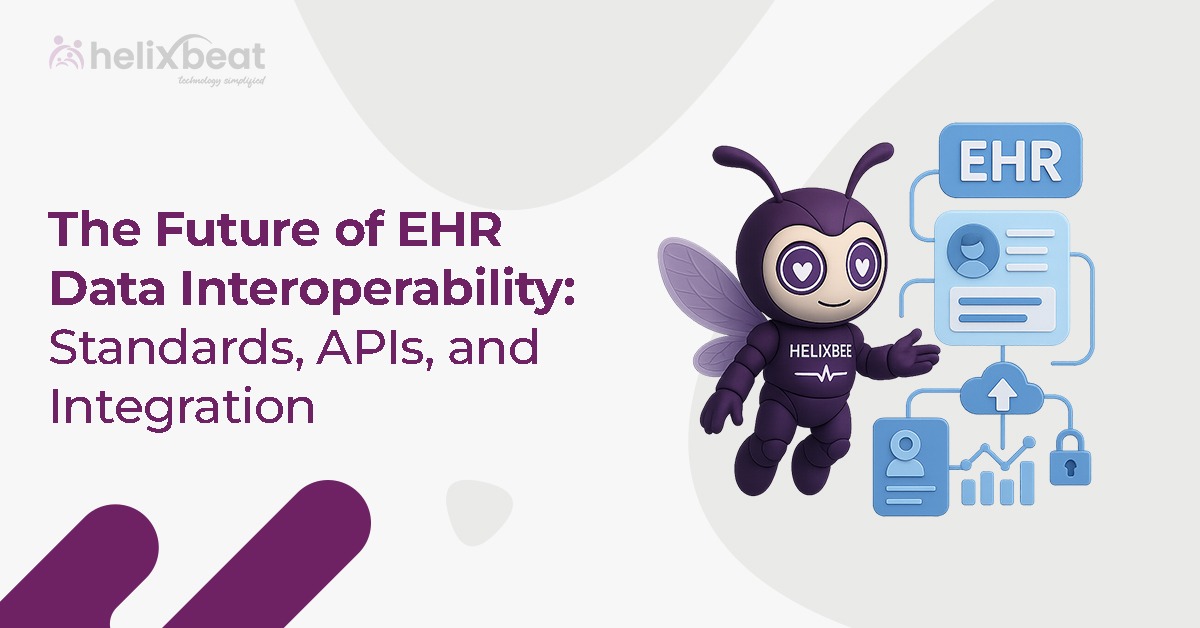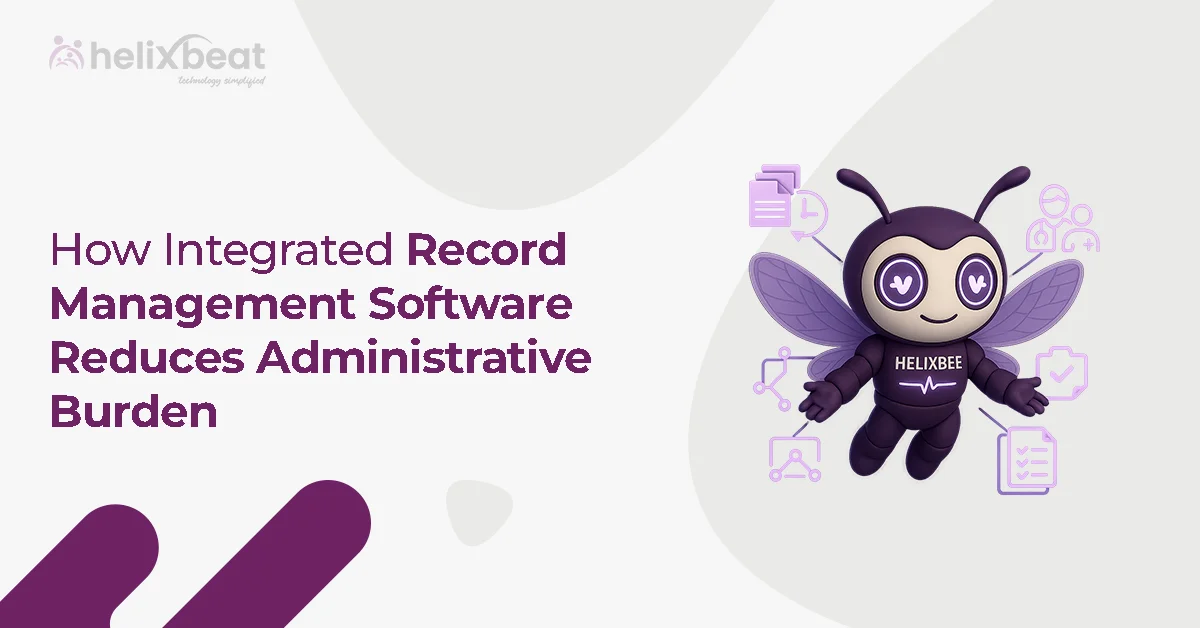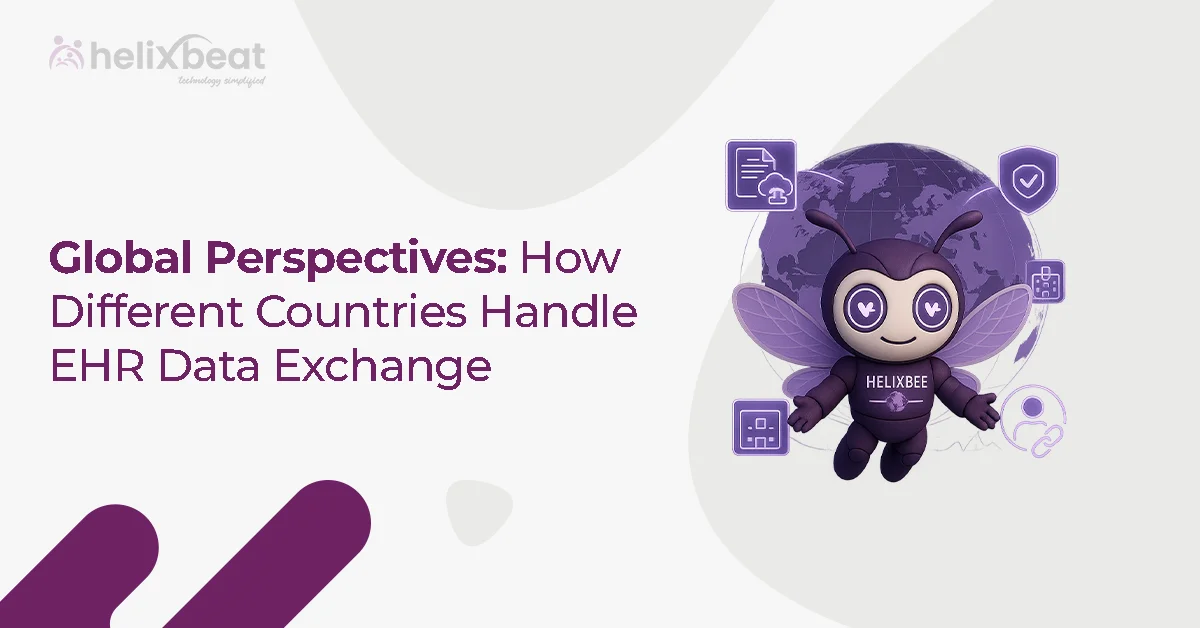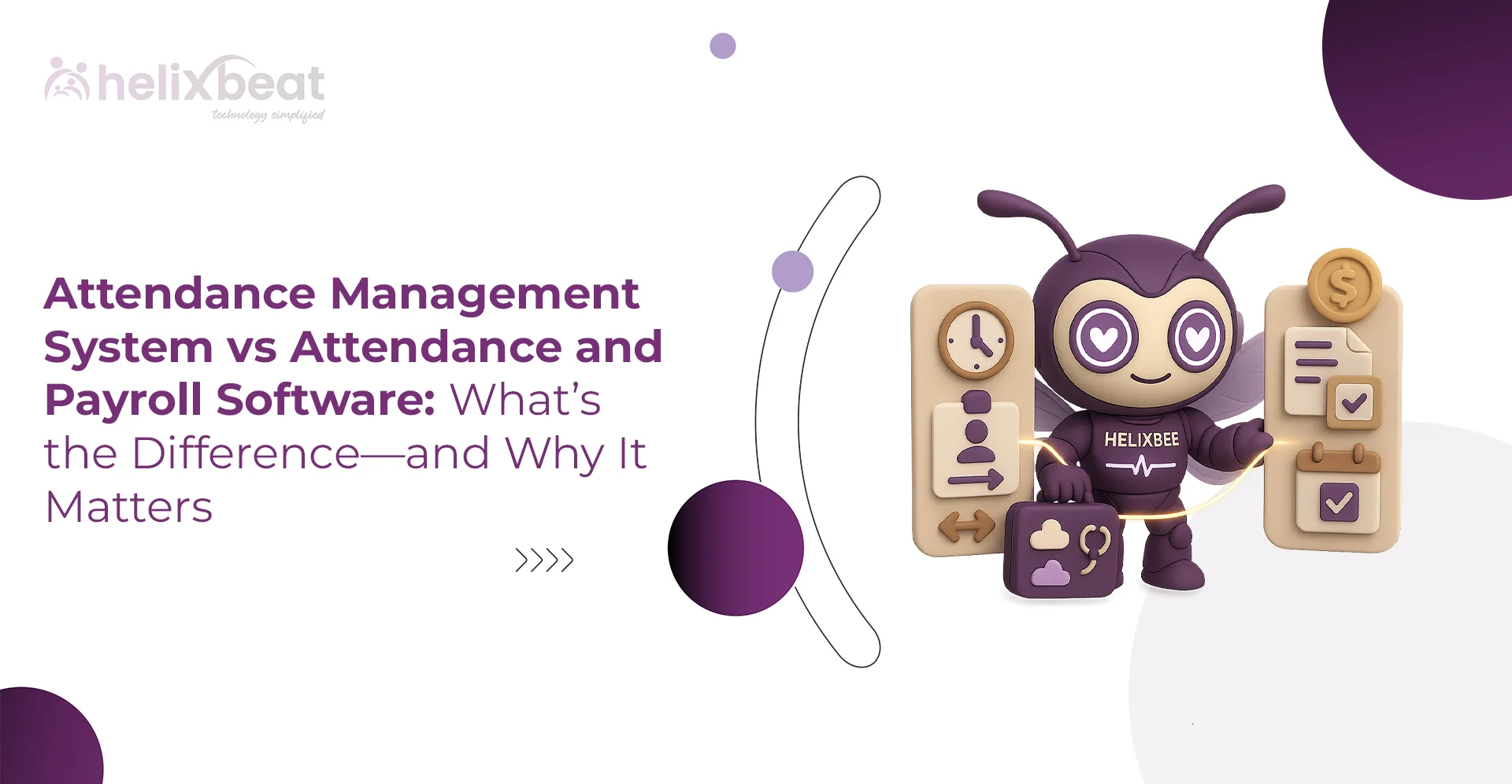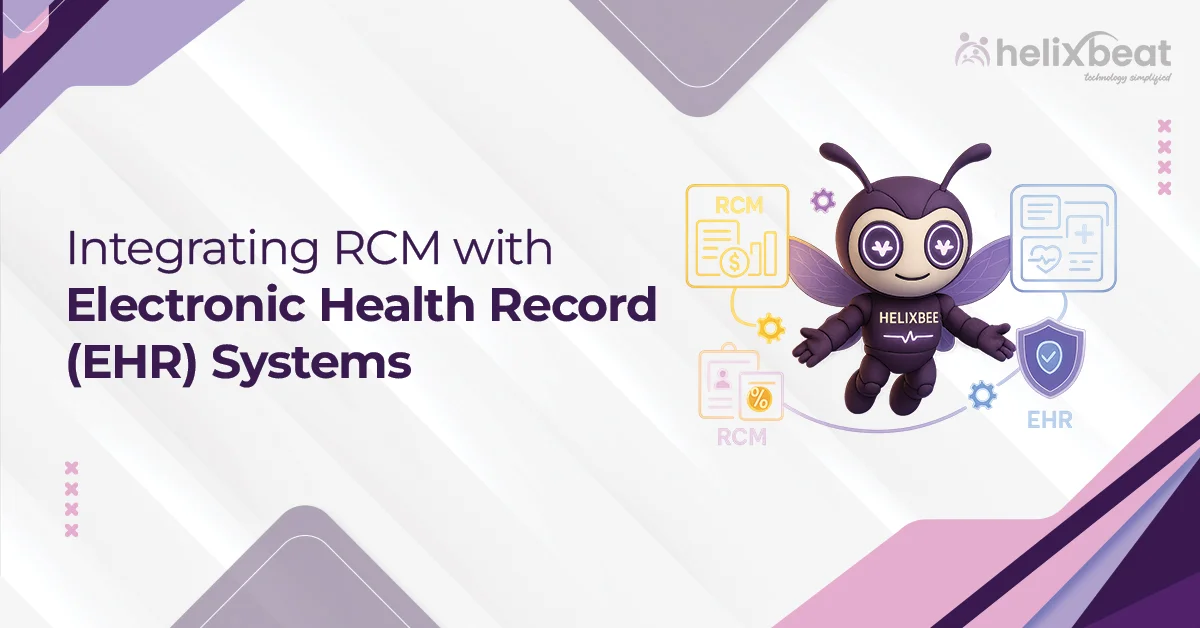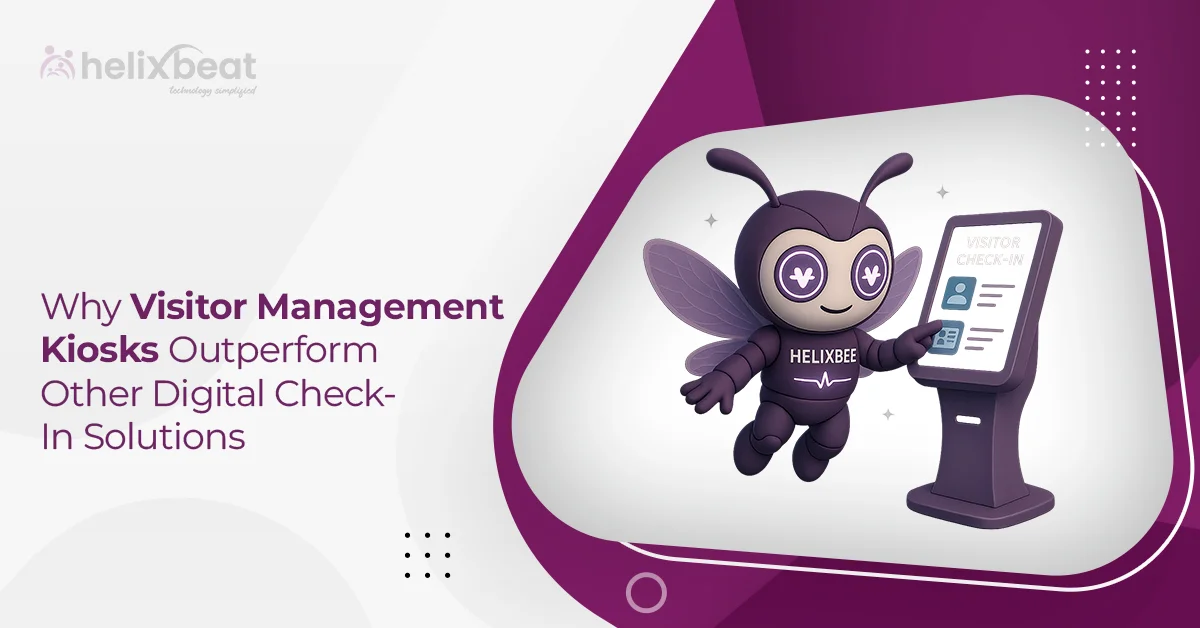The future of electronic health record data relies heavily on achieving true interoperability between systems. As patient engagement in healthcare becomes a top priority, integrating EHR systems through standards, APIs, and seamless data exchange is essential in creating a more connected, efficient, and patient-centered healthcare system.
In this blog, we will explore how EHR interoperability is shaping the future of healthcare and how technologies like patient engagement software and digital solutions are driving this transformation. By focusing on these advancements, we can gain a deeper understanding of their impact on improving healthcare delivery and patient outcomes.
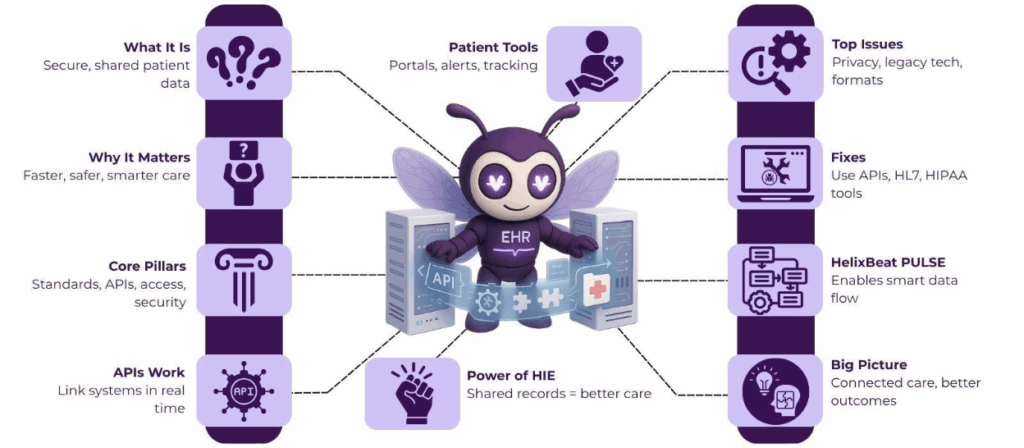
Table of Contents
What is Electronic Health Record Data Interoperability?
EHR data interoperability refers to the ability of different healthcare systems and devices to exchange patient data in a clear, efficient, and secure manner. This is crucial for ensuring that patient information is available in real-time, regardless of where care is provided. Interoperability enables healthcare providers to communicate effectively with one another. This allows them to work together to give coordinated care, especially when a patient is seeing multiple providers or needs services from different organizations.
Here’s a breakdown of the key components of EHR data interoperability:
1. Interoperable Systems
- Interoperable systems are those that can easily share patient information across different healthcare environments.
- These systems allow data to flow seamlessly between hospitals, clinics, specialists, and other healthcare facilities.
- By connecting various software platforms, healthcare providers can access comprehensive and accurate patient data, regardless of where the patient is treated.
- PULSE by HelixBeat enables this by integrating seamlessly with existing healthcare systems to improve care coordination and enhance patient outcomes.
2. Data Standardization
- Data standardization ensures that health data is formatted uniformly, making it easier to exchange across different platforms.
- By using universal standards like HL7, FHIR, or CDA, healthcare organizations can ensure that all patient data, such as lab results, medical history, and prescriptions, are consistent and can be interpreted by any system.
- PULSE by HelixBeat leverages these standards to ensure that patient information can be shared effectively and without confusion across various healthcare settings.
3. Secure Exchange
- EHR data exchange must be secure to protect patient privacy and maintain regulatory compliance.
- HIPAA and other regulations dictate how healthcare providers must handle and share patient information.
- PULSE by HelixBeat ensures secure data exchange through encrypted communication channels, guaranteeing that patient data is shared safely while meeting privacy requirements.
- This ensures that both providers and patients can trust the system with sensitive health information.
Explore Features of HelixBeat’s EHR Integration
The Importance of Interoperability in Electronic Health Record Systems
With seamless data exchange across healthcare systems, EHR interoperability enhances care coordination, improves patient outcomes, and fosters a more efficient healthcare environment. Below are the key benefits of achieving interoperability in EHR systems, with a focus on PULSE by HelixBeat as an example of how seamless integration can enhance patient care:
1. Improved Care Coordination
- EHR interoperability ensures that patient data can flow effortlessly between various care providers, from primary care physicians to specialists.
- This enables healthcare teams to work together more efficiently, with access to the most up-to-date and comprehensive information.
- By enabling PULSE by HelixBeat to integrate with existing systems, healthcare providers can easily share patient data in real-time, resulting in coordinated care plans that lead to better patient outcomes.
2. Reduced Medical Errors
- One of the most critical advantages of EHR interoperability is the reduction in medical errors.
- When healthcare professionals have access to complete and accurate patient information, the risk of errors due to missing or insufficient data is minimized.
3. Enhanced Patient Engagement
- Interoperability also empowers patients by providing them with access to their health information through patient portals and other electronic systems.
- With PULSE by HelixBeat, patients can easily access their medical records, view test results, schedule appointments, and communicate directly with their healthcare providers.
- This transparency encourages patients to take a more active role in managing their health, resulting in improved adherence to treatment plans and better overall health outcomes.
4. Faster Decision-Making
- Real-time data exchange accelerates the decision-making process, allowing healthcare providers to make quicker and more accurate diagnoses and treatment plans.
- With PULSE by HelixBeat, providers can instantly access a patient’s medical history, lab results, and other relevant data, helping them make informed decisions without delay. This speed is especially crucial in emergencies where timely intervention can save lives and prevent complications.
The Four Pillars of Interoperability in Healthcare
APIs (Application Programming Interfaces) play a pivotal role in transforming EHR data exchange by enabling seamless communication between various healthcare applications, devices, and systems.
- Facilitating Data Sharing: APIs enable healthcare systems to share real-time data, thereby reducing delays and enhancing care continuity.
- Improved Data Access: APIs provide healthcare providers with access to EHR data across various platforms, thereby enhancing the efficiency of care delivery.
- Integration with Third-Party Systems: APIs enable integration of patient engagement software and other applications, such as telemedicine platforms, into existing EHR systems.
The Role of Digital Patient Engagement in EHR Integration
Digital patient engagement solutions leverage EHR data to create a more personalized and involved care experience. By integrating patient engagement software with EHR systems, healthcare providers can offer more direct, tailored communication with patients, leading to better health outcomes.
- Patient Portals: Enable patients to view their medical records, schedule appointments, and track their treatment progress, thereby enhancing their involvement in their healthcare journey.
- Automated Communication: Tools like appointment reminders, medication reminders, and follow-ups enhance patient compliance and communication.
- Real-Time Data Access: With digital patient engagement solutions, patients and providers can track health data in real-time, facilitating proactive interventions and care.
The Impact of Health Information Exchange (HIE) on EHR Systems
Health Information Exchange (HIE) is a crucial aspect of EHR data interoperability. It enables the secure sharing of health data across various healthcare organizations, ensuring that patient information is accessible to providers regardless of where care is being delivered.
1. Improved Continuity of Care
- HIE ensures that all healthcare providers involved in a patient care have access to the same up-to-date information, improving coordination and continuity.
2. Faster and More Accurate Decisions
- By providing instant access to comprehensive patient data, HIE facilitates faster and more accurate clinical decision-making.
3. Reduced Duplication of Efforts
- Health information exchange reduces the need for repeated tests and procedures by ensuring that all providers have access to the same patient records.
Challenges and Solutions in EHR Data Interoperability
Here’s a breakdown of these challenges and the solutions to overcome them:
1. Data Privacy and Security Concerns
- Challenge: Ensuring that patient data is protected and compliant with privacy regulations, such as HIPAA, is a significant concern. EHR systems often store highly sensitive health information that must be kept secure from unauthorized access and breaches.
- Solution: Select an EHR system that is fully HIPAA-compliant and utilizes advanced encryption methods to safeguard data both at rest and in transit. Ensuring that the system has strong access control features, audit trails, and secure authentication protocols is crucial for maintaining patient confidentiality.
2. Integration with Legacy Systems
- Challenge: Many healthcare organizations still use outdated or fragmented systems that are not compatible with modern EHR systems. This lack of integration can hinder the smooth flow of data across different platforms and healthcare providers, leading to inefficiencies and potential errors.
- Solution: opt for EHR systems that support API integration to enable seamless communication between new systems and legacy technology. By adopting an EHR system that allows for easy data migration and integrates with existing technologies (such as practice management systems and electronic prescribing systems), healthcare providers can ensure a smooth transition and better data flow across systems.
3. Lack of Standardization
- Challenge: Healthcare data is often stored in different formats and structures across various systems, which makes it difficult to share information between providers. The lack of universal data standards can lead to inconsistencies, errors, and delays in patient care.
- Solution: Adopt widely recognized data standards, such as HL7 and FHIR (Fast Healthcare Interoperability Resources), to ensure that patient data is consistent and can be shared easily between systems. Standardized formats facilitate the integration of data from various providers, ensuring more accurate and efficient communication. These standards ensure compatibility between systems, enhance data exchange, and contribute to the creation of a more cohesive healthcare network.
The Bottom Line
The future of EHR data interoperability relies on standardized systems, secure data exchange, and seamless integration between healthcare providers. Achieving true interoperability not only enhances the quality of patient care but also empowers healthcare professionals to deliver more effective and personalized treatment. With HelixBeat’s PULSE platform, we are paving the way for smarter, more connected healthcare through enhanced EHR integration and patient engagement.
Start Building Smarter Healthcare Solutions with HelixBeat
FAQs
1. What is the impact of health information exchange interoperability and integration on the EHR system?
Health information exchange (HIE) interoperability allows patient data to be shared seamlessly across different healthcare systems, leading to improved care coordination, faster decision-making, and better patient outcomes.
2. What are the 4 pillars of interoperability?
The four pillars of interoperability are data standards, security and privacy, technology infrastructure, and patient consent. These pillars ensure that data can be exchanged securely, accurately, and efficiently between healthcare systems.
- Why is interoperability so important when using EHR?
EHR interoperability is crucial for ensuring seamless communication between healthcare providers, enabling real-time access to comprehensive patient data, reducing errors, and improving care coordination.
- How do electronic health records improve patient care?
Electronic health record systems improve patient care by providing real-time access to patient data, enabling more accurate diagnoses, reducing medication errors, and improving communication between healthcare providers.
- What is the role of patient engagement in healthcare with EHR systems?
Patient engagement in healthcare is enhanced by EHR systems that provide patients with access to their health data, appointment scheduling, and direct communication with their healthcare providers, allowing for greater involvement in their care.
- How does EHR data integration enhance communication between doctors and patients?
EHR integration enhances communication by allowing doctors to access and update a patient’s medical history instantly, improving the accuracy of information shared with patients and leading to better, more informed discussions.
- How do APIs play a role in EHR data exchange?
APIs (Application Programming Interfaces) enable seamless integration between EHR systems and other healthcare platforms, facilitating the smooth exchange of patient data, enhancing digital patient engagement, and improving overall care coordination.
- How can electronic patient record management systems improve patient outcomes?
Electronic patient record management systems ensure accurate, real-time data sharing across healthcare providers, leading to timely interventions, fewer errors, and more personalized care, ultimately improving patient outcomes.
- Why is digital patient engagement important in healthcare?
Digital patient engagement enables patients to manage their health by providing access to their medical records, treatment plans, and educational resources, fostering a proactive role in their care.
- What are the common challenges in EHR data interoperability?
Common challenges include data privacy concerns, system integration with legacy systems, lack of standardization, and ensuring the security of shared data across different platforms.
- What solutions exist to overcome the challenges of EHR data interoperability?
Solutions include adopting universal data standards like FHIR, using secure APIs for integration, and ensuring compliance with privacy regulations like HIPAA to protect patient data.
- How can HelixBeat help with EHR data interoperability?
HelixBeat provides customizable EHR integration solutions that facilitate digital patient engagement and improve patient engagement in healthcare, offering seamless interoperability across platforms to enhance care delivery and patient outcomes.



